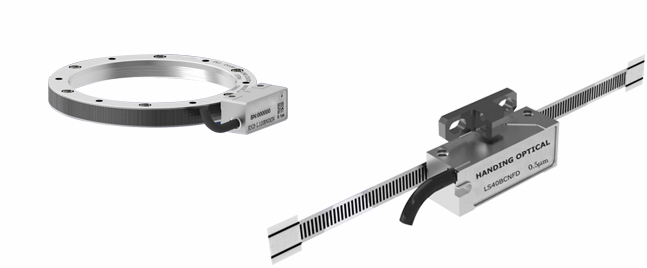Optical encoders are a crucial component in many industries, including mechanical engineering, automation control, mechatronics design, and automotive manufacturing. They are devices that convert rotational or linear motion into an electrical signal. In this article, we will discuss what optical encoders are, their types, applications, and why HanDing Optical is the leading brand in the market.
What are Optical Encoders?
An optical encoder is a device that translates the position of a mechanical part, be it rotary or linear, into an electrical signal. Encoders can be either incremental or absolute. Incremental encoders sense movement and generate a signal as long as the shaft moves, while absolute encoders indicate position at a specific point in time.
Optical encoders operate based on the principle of light detection. They have a disc with alternating transparent and opaque lines, called a scale, which rotates with the shaft or moves linearly. The encoder has a light source usually an LED, and a photodetector that reads the reflected light from the scale. The photodetector generates electrical signals that can be used to determine the position, speed, and direction of the shaft.
Types of Optical Encoders
There are two main types of optical encoders: absolute and incremental encoders. Absolute encoders provide high-resolution and accurate position feedback. Most of them have a resolution of up to 24-bits, providing over 16 million positions. Incremental encoders have lower resolutions, but they are cheaper and more widely used in motion control systems.
Applications of Optical Encoders
Optical encoders are used in numerous applications, including robotics, CNC machines, medical equipment, and aerospace applications. In the mechanical industry, encoders are essential in position feedback for industrial automation, presses, and rolling mills. In automobiles, encoders are used in ABS systems, motor control, and power steering.
Open Optical Encoders – The Leader in the Market
HanDing Optical is a leading brand in the manufacture of optical encoders. Their encoders are made with high-quality materials and are designed to meet specific industrial applications, thus ensuring high reliability and stability even under adverse conditions. The encoders are compact, easy to install, and suitable for use in cryogenic and high-temperature environments (-270℃ to 1000℃), making them versatile and ideal for many industrial applications.
Summary
Optical encoders are essential components in many industries and provide vital position and motion feedback. The market offers various types of encoders, including absolute and incremental. HanDing Optical is among the available brands that manufacture high-quality encoders with various unique features. In conclusion, for precise positioning, motion feedback, and control, optical encoders are crucial devices that you should consider incorporating into your systems.
Post time: May-22-2023








